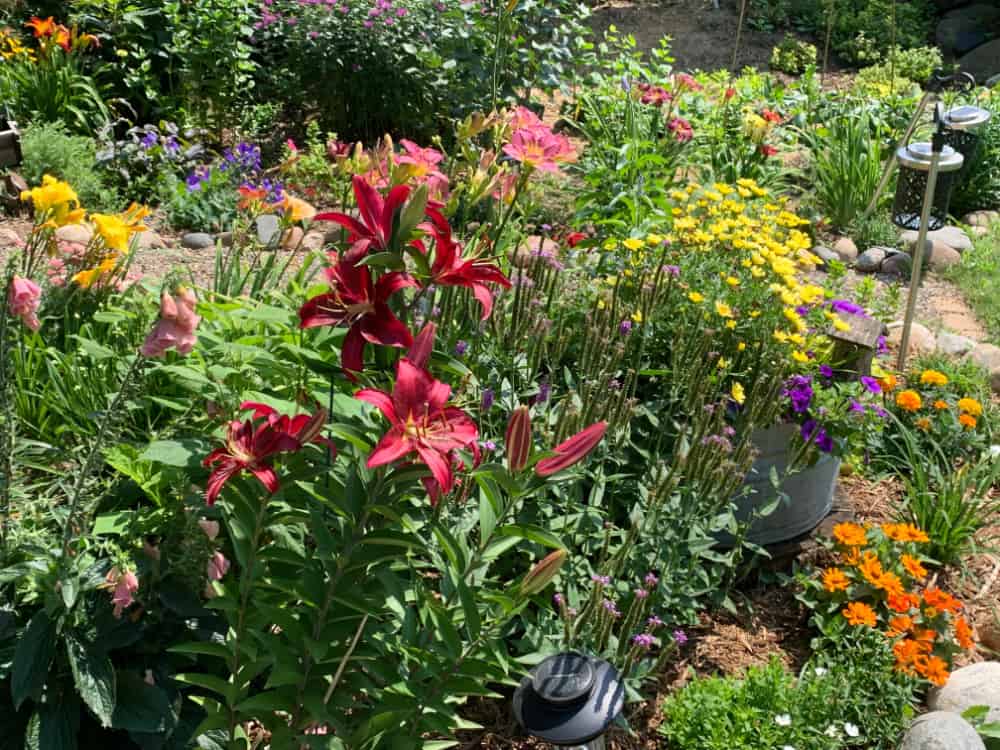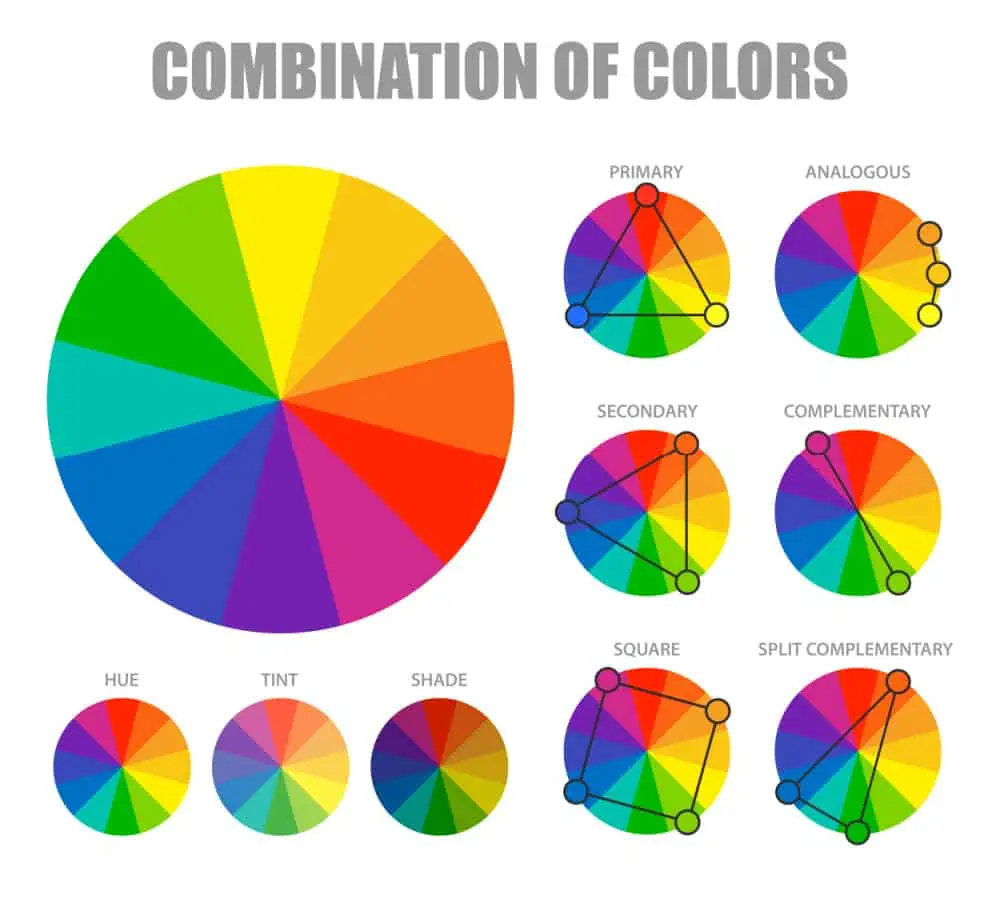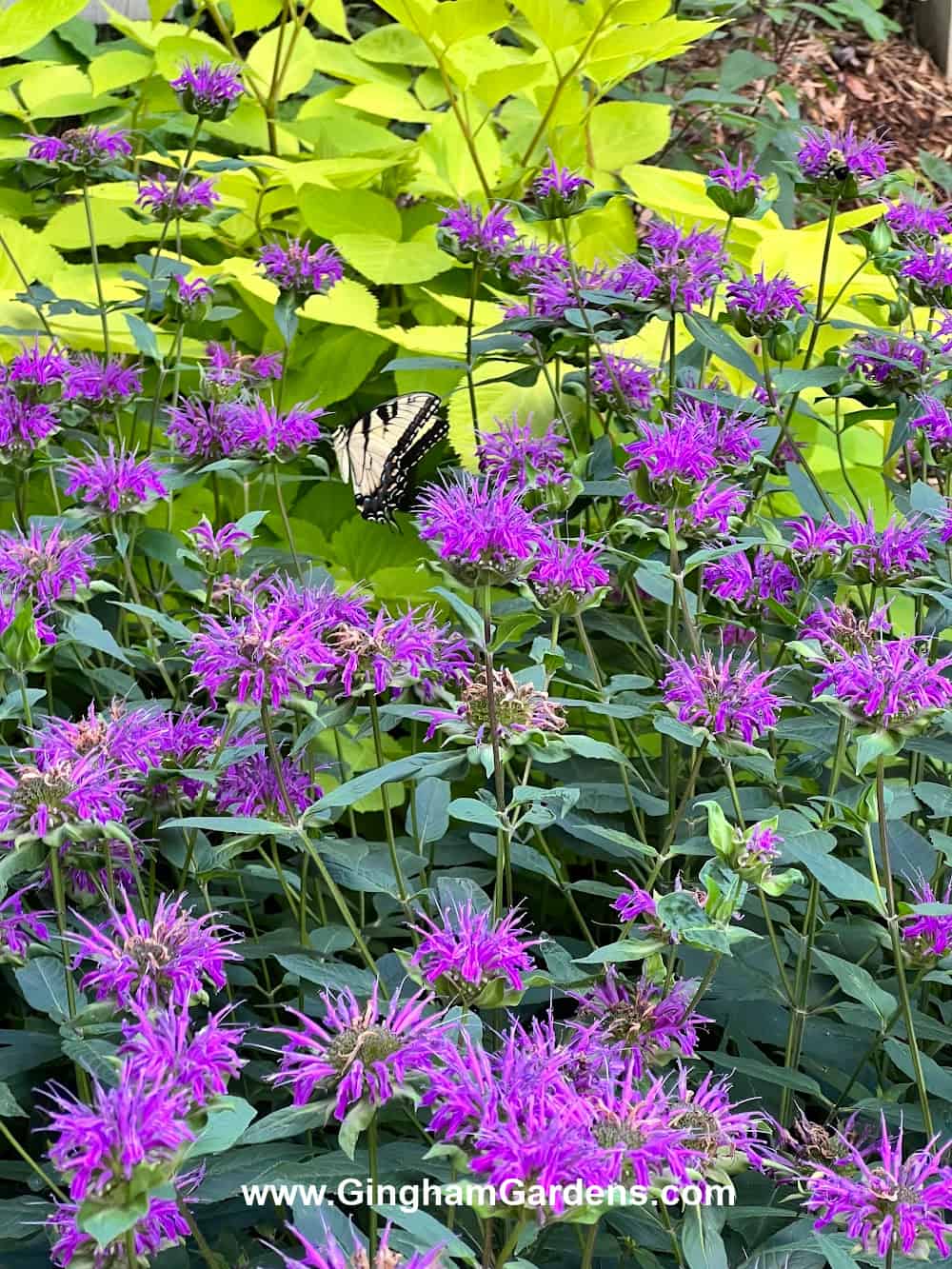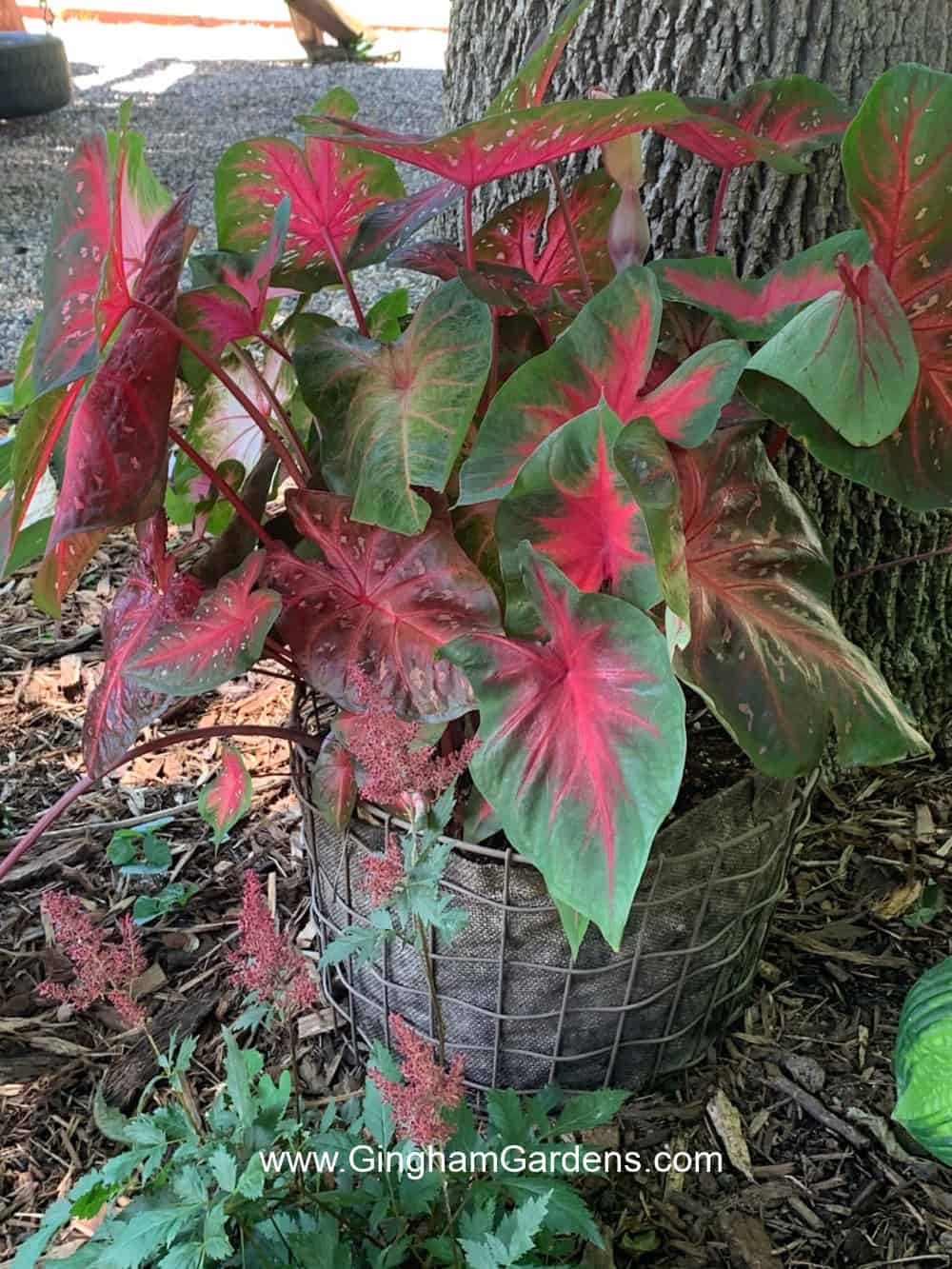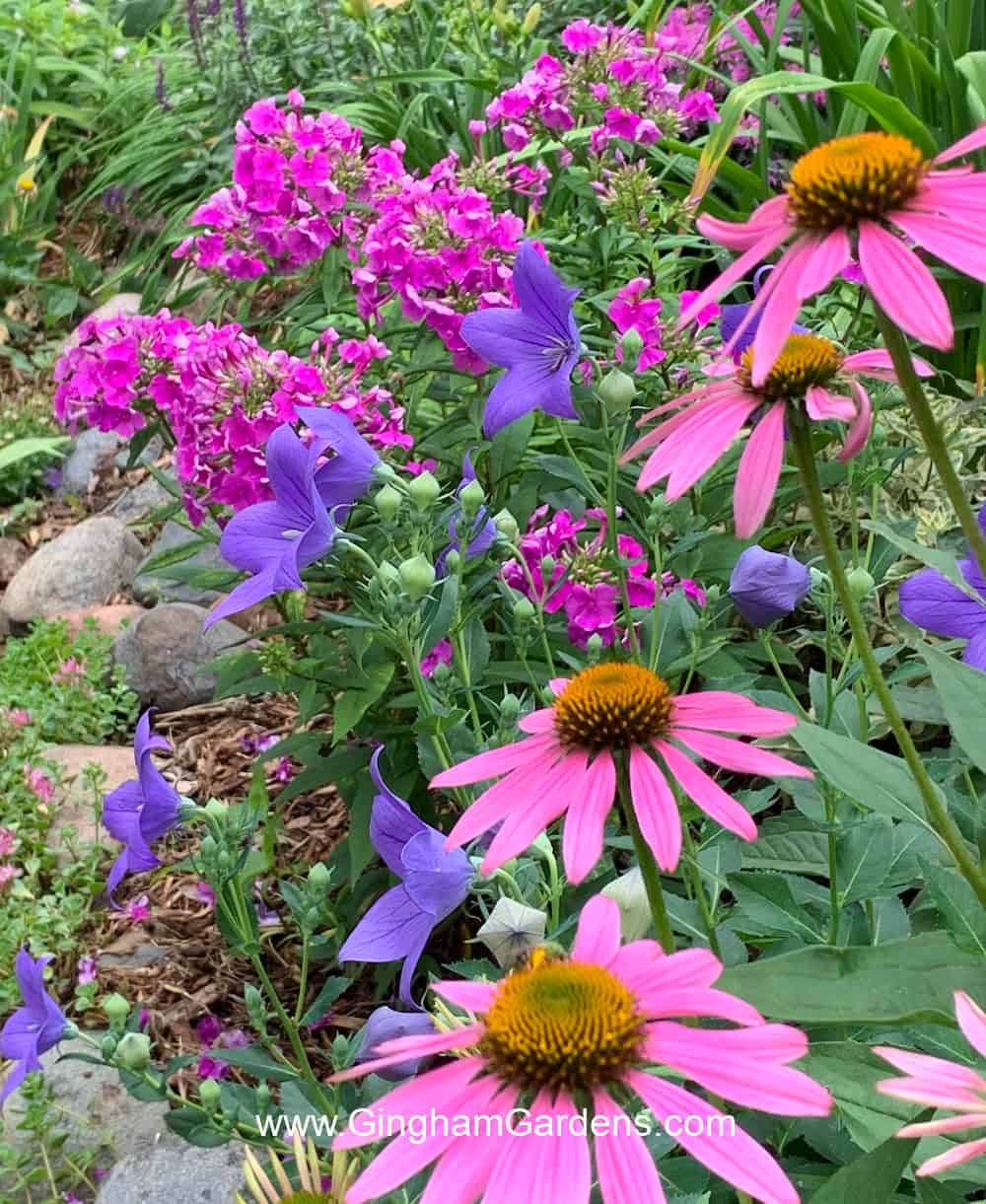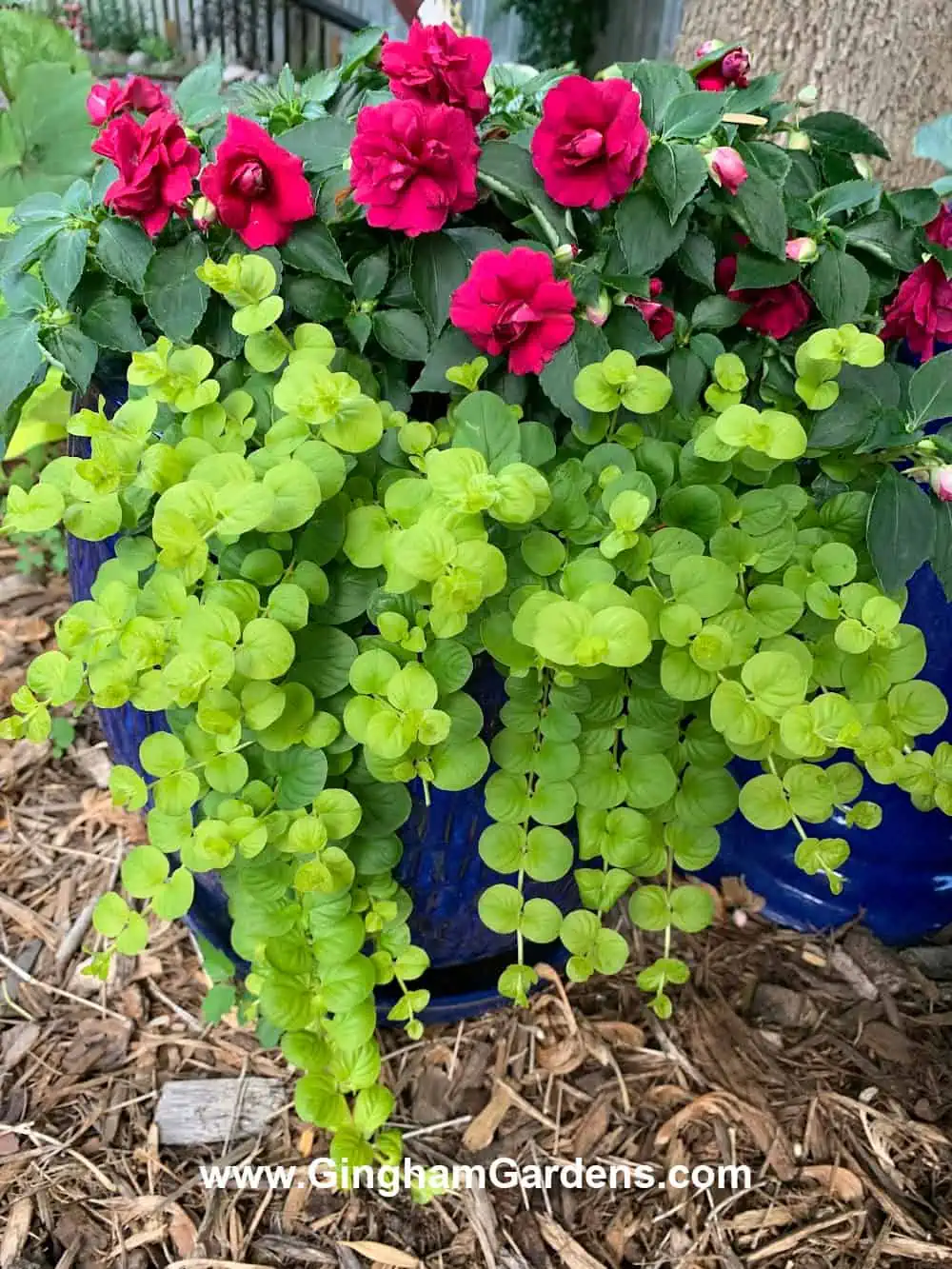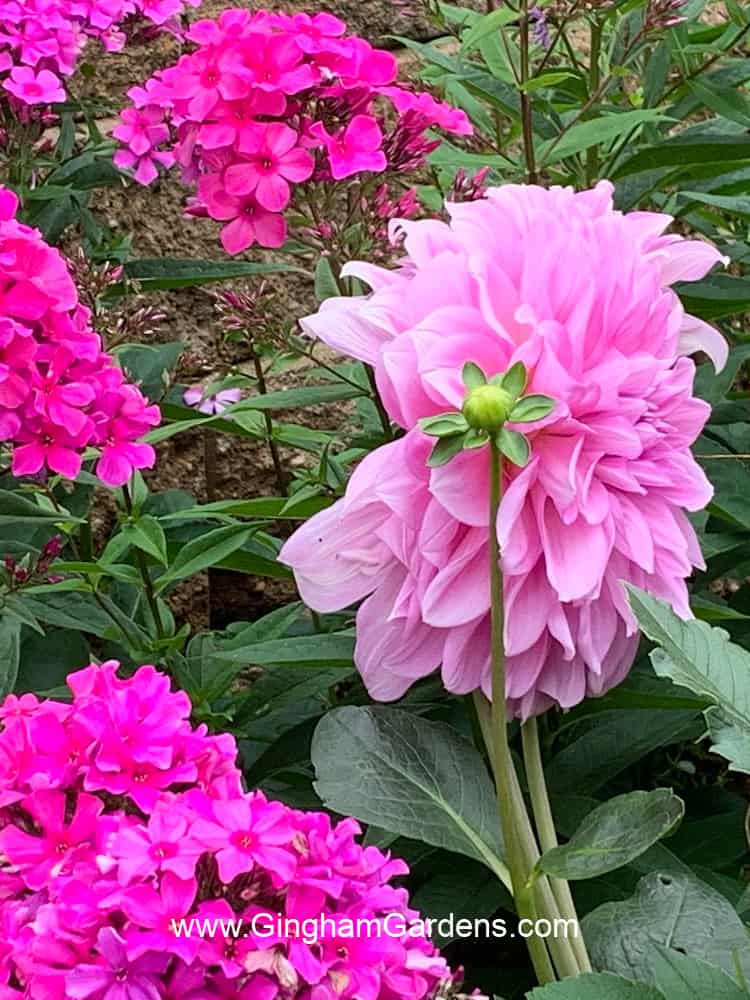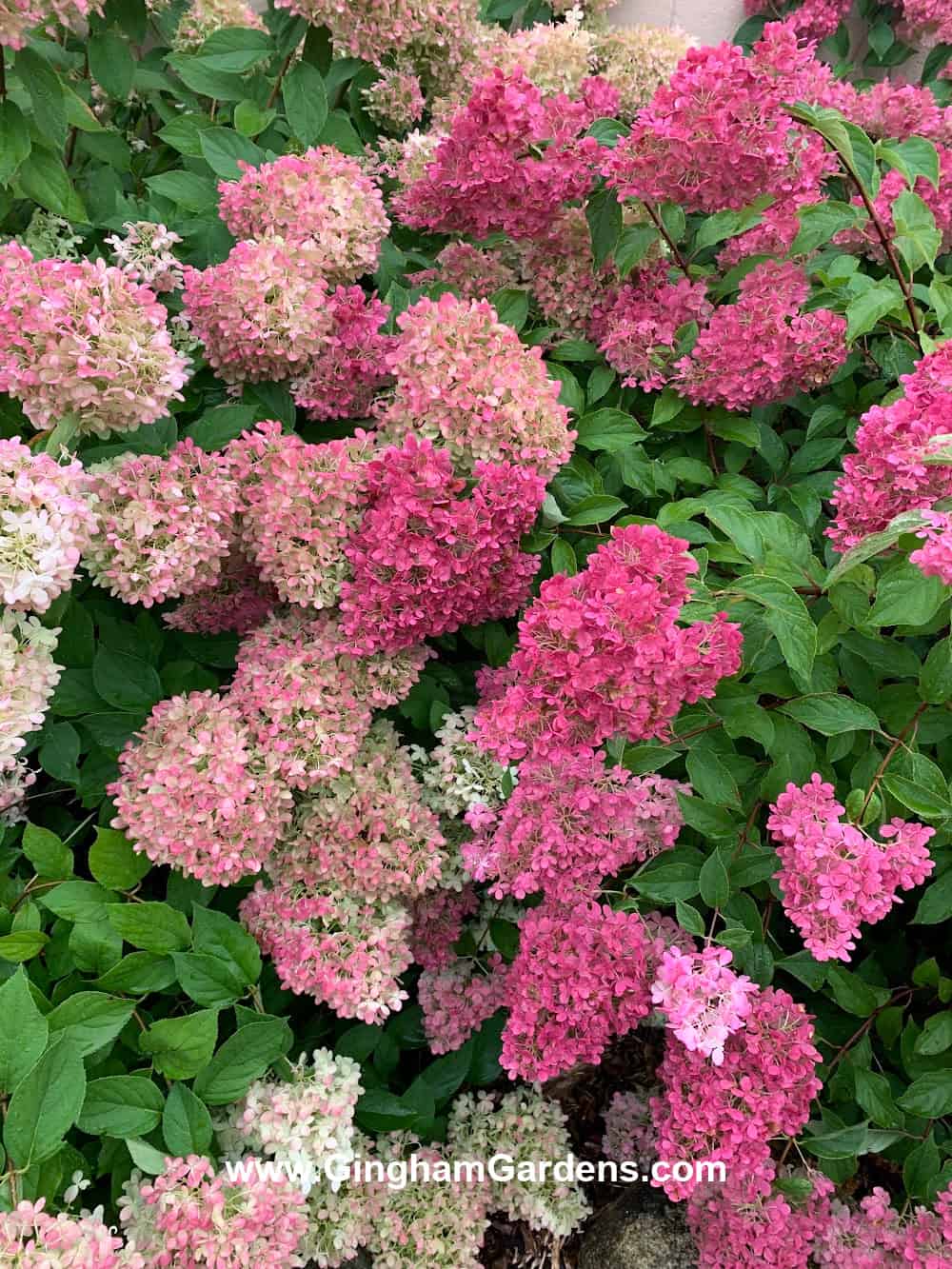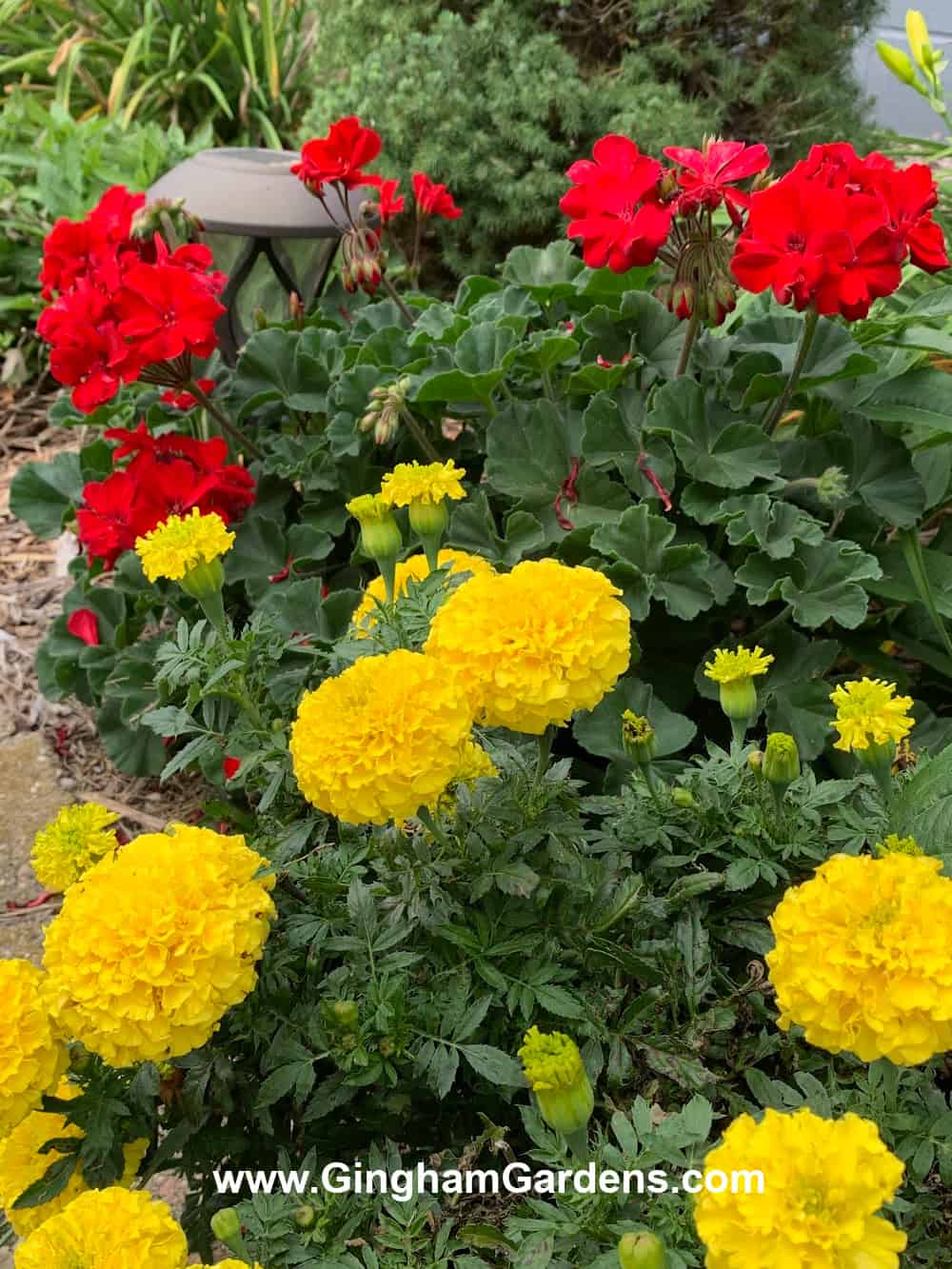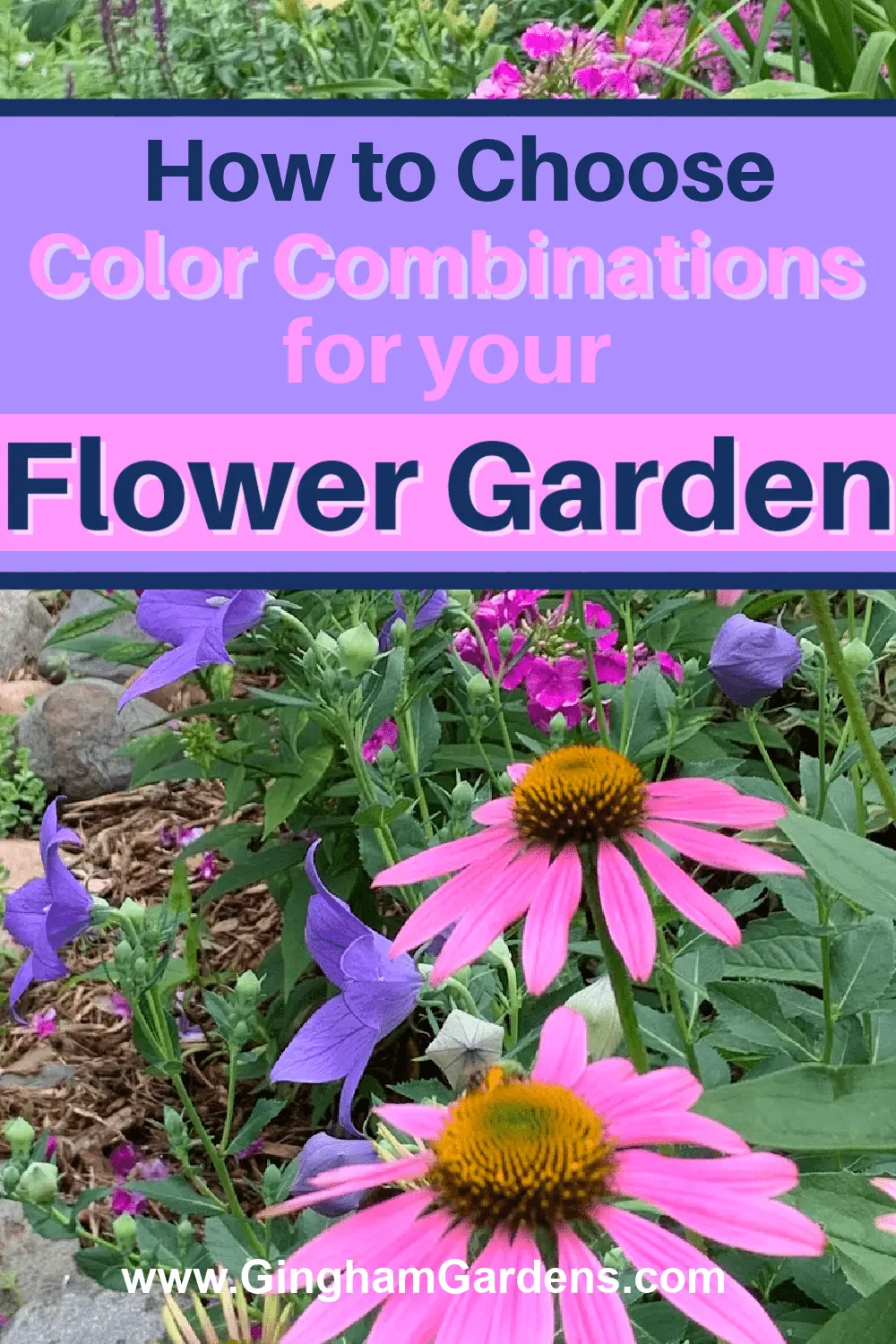Winning Color Combinations in a Flower Garden
Flowers are one of the best ways to add color to any garden bed, but how do you make sure they all look good together? Read on to learn how to choose winning color combinations in a flower garden that will pair perfectly every time!
I think we’ve all been there. We plant a few of our favorite flowers dreaming of creating this beautiful, inviting space. When summer finally arrives, we notice that the colors don’t really go together. One plant will clash with the bright red of another or the new perennial you planted sticks out like a sore thumb.
If you plan with the end in mind, you can plant harmonious colors that look stunning together. Whether you’re in a small space or have a large garden, these color-blending skills will make things so much easier and before you know it they will become second nature to you!
Things to Consider Before Planting
Although there are endless options and ways to use color in the garden, it helps to think through what you’re looking for first.
- What colors are already in your garden? Consider the foliage colors and your existing garden plants. What colors are your containers, walls, and furnishings?
- How much flexibility do you have? Are you starting from scratch or just trying to add a few new colors to an existing garden?
- Do you prefer annuals or perennial flowers? Annuals are more forgiving since you’ll replace them next year. Use perennial plants as the heart of your design and supplement with short-lived annuals.
If you dream of beautiful, homegrown, color-coordinated bouquets, learn how to grow a cutting garden to plan ahead for the best fillers, foliage, and blooms.
How to Choose Winning Color Combinations in a Flower Garden and Flower Planters
The easiest way to create your garden color schemes is by using the color wheel! There are truly endless color combinations out there and they make it so easy to develop a custom palette of colors for your flower bed or your flower containers.
- Primary colors – Red, yellow, and blue can be blended, darkened, or lightened to create thousands of colors.
- Secondary colors – Anytime you combine two primary colors, you get a secondary color. There are three: orange, green, and purple.
- Tertiary colors – Whenever you add a primary color to a secondary color, you get tertiary colors. Think blue-green (teal), yellow-green (chartreuse), red-orange (vermilion), and the other hyphenated colors in the crayon box.
Have you ever heard of warm and cool colors? Colors with red, orange, or yellow are considered warm. Cool colors include blue, purple, and green. An easy way to plan your garden is to choose one of these “temperatures” and then add some neutral colors like white, ivory, or blush for a beautiful, low-stress flower garden design.
Think about different ways you can add color other than flowers. The cobalt blue birdbath looks stunning with the bright colors of the flowers in the grouping.
4 Easy Color Matching Techniques
Once you have a color wheel, you can use these classic color-matching techniques. Stay with me here. Although this sounds complicated, it is really so easy. I’ll bet you’re using some of these techniques in your perennial garden and when you select plants for your containers and you don’t even realize it.
- Complementary colors – Colors on opposite sides of the color wheel.
- Analogous colors – Choose three colors next to each other.
- Split complementary – Find a complementary pair and then select the color on either side of one of the sides for a three-color palette.
- Monochromatic – Select one color and choose 4-5 different shades from light to dark.
Complementary Colors
One of the easiest ways to pair colors is to find a complementary pair by matching two colors on opposite sides of the color wheel. The high contrast in a complementary color scheme has tons of visual impact. It naturally catches the eye and is a classic strategy garden designers use to get a beautiful balance of colors every time.
- Blue and orange
- Red and green
- Yellow and purple
- Vermilion (orange-red) and teal (blue-green)
- Magenta (red-purple) and chartreuse (yellow-green)
Although you’ll be hard-pressed to find a flower in the color teal, think about teal-colored succulents, or teal-colored evergreen shrubs, or a teal container, or blue-green hostas.
One of my favorite color combinations is blue or purple and yellow. The image below is a good example of this with purple balloon flowers and coreopsis.
Another lovely combo is the magenta bee balm and the chartreuse Aralia Sun King. The butterflies and bees are loving it too.
Pink and green are a natural pair and always look good in the garden. Pair bright pinks with bold green ornamental grasses or foliage. Think about a plant like caladium where many varieties already have these colors mixed together in their foliage color.
Analogous colors
Especially if you have a favorite color, analogous colors make it easy to find similar colors that pair nicely without looking too matchy-matchy. Choose 3 colors next to each other on the color wheel.
Try choosing red, magenta, and purple for a cheerful, feminine look. The analogous color palette shines in the photo below with violet balloon flowers, pink coneflowers and magenta phlox.
Split complementary colors
This sounds complicated, but it’s just a blend between complementary and analogous. Choose a set of complementary colors like red-purple (magenta) and yellow-green (chartreuse). Take one of those colors and choose one of its neighbors from either side. In the image below, I choose the gorgeous magenta double impatiens, along with the chartreuse creeping jenny. Those two colors along with the green leaves of the impatiens make this a good example of a split complementary color scheme.
Plus, combining 3 different colors adds more visual interest than traditional complementary color schemes. This is really fun and a cool way to come up with stunning container gardens. Remember, you can use the color of you pot and foliage counts too.
- Purple, yellow and magenta
- Magenta, chartreuse and yellow
- Violet, amber, and chartreuse
Monochromatic color scheme
One of the easiest and prettiest ways to create winning color combinations in a flower garden is to use different shades of one color. All the colors will look great together, making it so easy to set up your small garden. Because I love a riot of color in my summer garden beds, I tend to shy away from monochromatic, but if you love the look I encourage you to go for it.
One beautiful, feminine color palette includes a variety of shades of pink. In the image below, the pale pink dahlia with the bright pink tall garden phlox look so pretty together.
Again, some plants have their own monochromatic color palette all in one flower, like the image below of a panicle hydrangea.
Using White in a Flower Garden
A white garden has a timeless, classic look, plus they look amazing as nighttime gardens. Pair different types of white perennial flowers like daisies, hydrangeas, peonies, roses and hollyhocks. Or annual flowers like alyssum, white impatiens, petunias and many more.
White flowers are always a good choice for your flower bed because they go with anything and everything. They can also serve as a focal point in a flower garden that otherwise has tons of color. Think of a big patch of shasta daisies in amongst your other flowers.
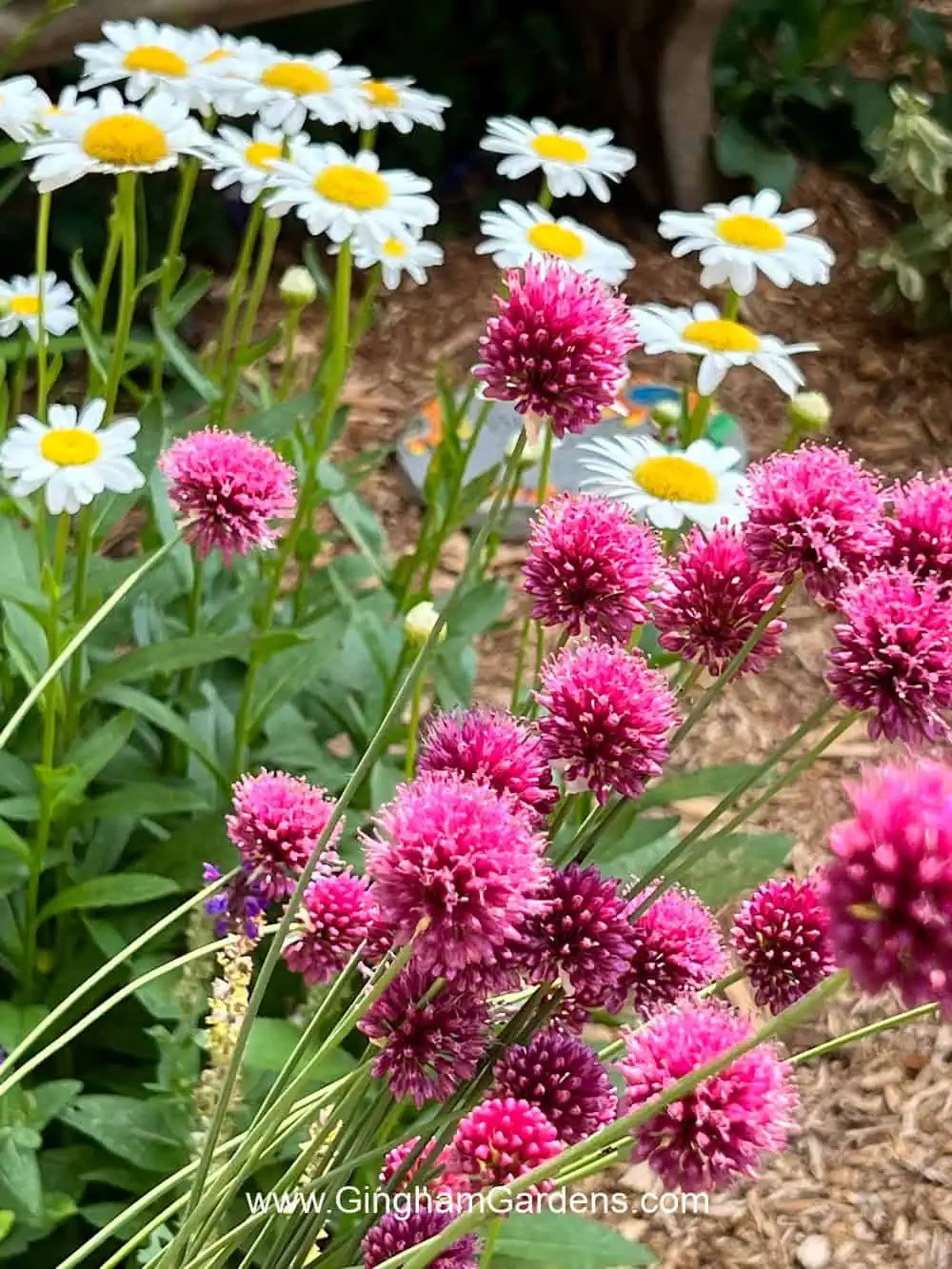
See how the yellow lilies in the image below play off the yellow centers of the Shasta Daisies.
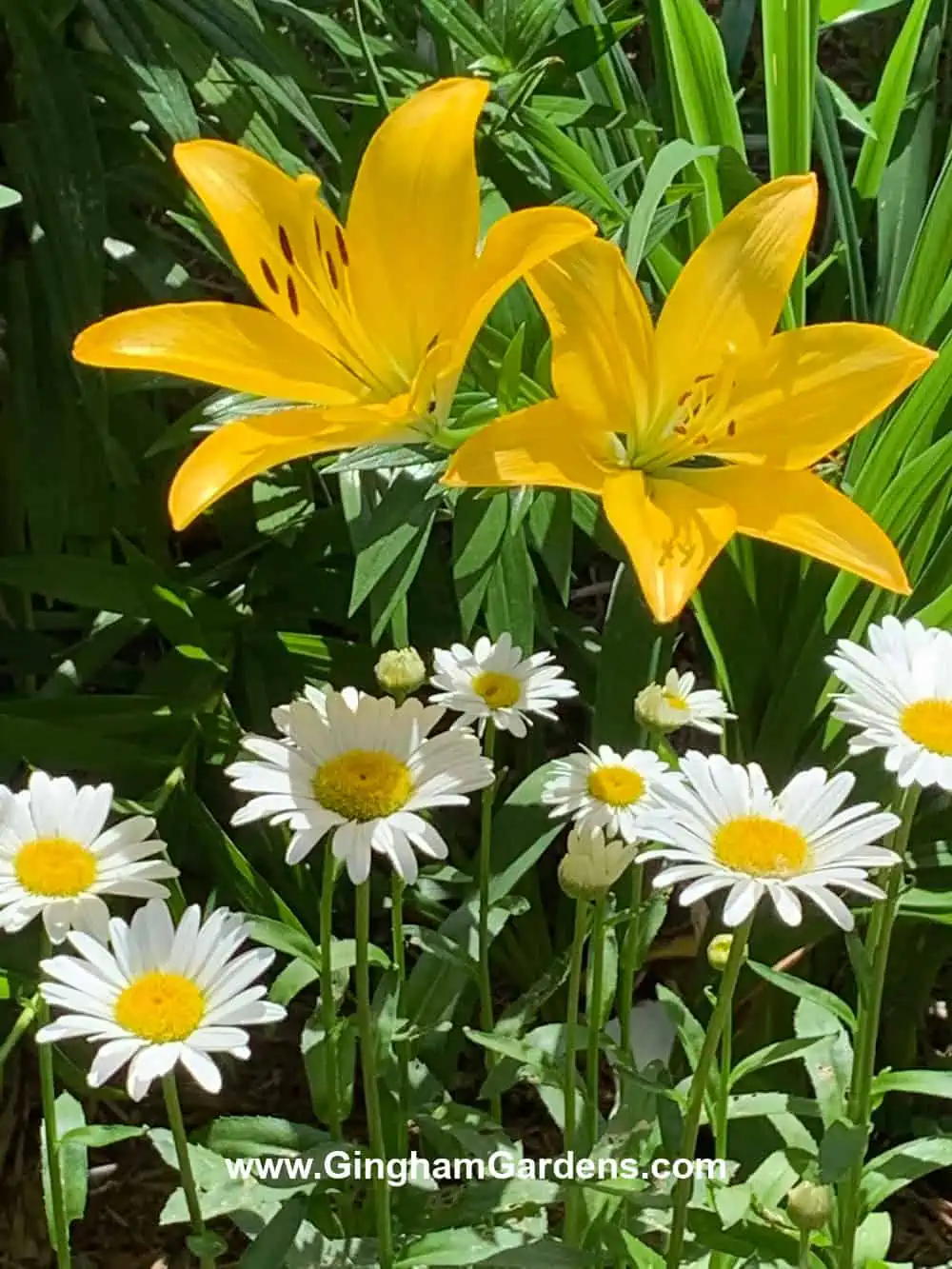
Color saturation & hue
Since most gardens can take more than 2-3 colors, try playing with color saturation and hue. Expand the color wheel to show darker and lighter shades of each color. Follow the same strategies as above to find new matches.
For example, purple and yellow are complementary colors. Choose dark purple and yellow or try planting lavender with pale yellow.
Pro Tip: Try an online color wheel
If you’re still unsure which colors will pair well, try using this online color wheel from Canva. It’s entirely free, and it shows the full color wheel. Simply choose a color to start with and identify which type of color scheme you want to use (you’ll see there are more than the four covered here). This useful tool takes out a lot of the guesswork so you can get planting!
Remember that it doesn’t matter if your color palette aligns with color theory or anything else. Your garden is just for you to enjoy, and that’s the only thing that matters!
Primary colors like red zonal geraniums and yellow marigolds and always a good color choice.
FAQs
What flower colors go well together?
There are so many great flower combinations, but one of the easiest ways to find colors that look good together is to rely on complementary colors like red and green, orange and blue, or purple and yellow.
You can also choose three different shades next to each other on the color wheel, like blue, blue-green, and green. These arrangements always look nice together and make it easy to add a lot of visual interest easy without being a color expert.
What are the best landscaping color schemes?
The best landscaping designs consider your existing plants, your home’s color, and your garden’s size. There is no one right color scheme!
Design a color palette around the color of your home. For example, a beige house often looks great with lavender, soft reds, and yellow flowers, which pop without being too bold. White houses can handle any color, so feel free to play with hot colors like bold red roses, yellow forsythia, or orange cosmos.
Trick the eye with warm and cool colors. Since warm colors make a space feel small, they’re great for large backyards and gardens. Cool colors appear further away, making a small yard feel much larger.
How to Practically Apply Color Theory to Your Flower Garden
I realize most of us here aren’t garden designers, myself included. So, how do we apply this to our gardens? First, of all don’t overthink it. One of the best things about flower gardens is that they can be redone.
Next, design and apply these principles to small areas at a time, or simply use these techniques to design your flower planters. Like I said earlier, if you been gardening for any length of time, you’re likely already creating winning color combinations in your flower garden and you don’t even realize it. If you’re new to flower gardening, don’t stress about your color groupings and just have fun with it. I have a confession, in the cover photo for this post, I did not plan the garden with color theory in mind. But, it still looks great, right?
The next time you are planning a plant shopping trip, before you head out to the garden center, take some time to plan out the color choices of the plants you want to purchase. I like to mix and match different combinations right in my shopping cart, especially when I’m buying plants to fill flower pots.
There are so many color combinations, and I hope you’re inspired to play around and get creative in your own garden! Once you do this a bit, it will become second nature to you and you won’t even have to think about winning color combinations in your flower garden. Remember that if you like it, that’s all that matters.
Happy gardening,
Joanna
More Great Things on Gingham Gardens
Sign up to receive our weekly newsletters full of gardening tips. You’ll also get access to our Gardening Resources Library and all our helpful gardening printables.
More places to find Gingham Gardens:
- Visit Gingham Gardens on Pinterest.
- If you’re on Facebook, Gingham Gardens is also on Facebook.
- Stop by Gingham Gardens’ Amazon store!
- Love Etsy? Come see us on Etsy too.
Save a pin to your gardening board on Pinterest, so you can remember this post later:

